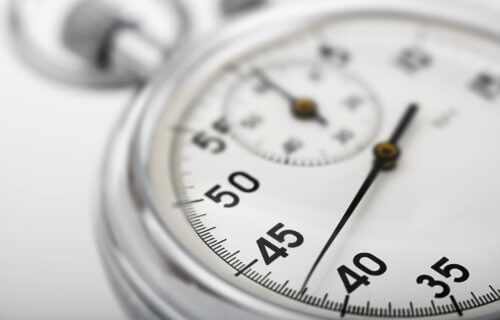ITHACA, N.Y. — When we’re standing shoulder to shoulder in a packed train car, or anxiously waiting for the “unfasten seatbelt” sign after landing, a matter of minutes can feel like an eternity. Now, interesting new research from Cornell University has come to similar conclusions via virtual reality rides on a New York City subway train. Scientists found that crowding makes perceptions of time pass more slowly.
So, the next time it feels like you’ve been on the packed train home for what feels like forever, just know that everyone else is probably feeling the same way. That being said, on a purely objective level, of course, that train ride is going to take the exact amount of time it always does, regardless of the number of passengers.
These findings contribute to evidence suggesting social context and subjective feelings distort our sense of the passage of time. This study may even hold practical implications for people’s willingness to use public transit, especially after the COVID-19 pandemic.
“It’s a new way of thinking about social crowding, showing that it changes how we perceive time,” says lead study author Saeedeh Sadeghi, M.S. ’19, a doctoral student in the field of psychology, in a media release. “Crowding creates stressful feelings, and that makes a trip feel longer.”
Prior research has identified a number of factors capable of influencing a person’s sense of time, such as subjective emotions, heart rate and a situation’s complexity, including the number of items requiring attention. Earlier experiments were conducted in lab settings for short periods using simple tasks and stimuli, such as shapes or images on a computer screen.
For this project, however, virtual reality was used to test time perception within an immersive yet highly controllable environment far more realistic than anything in a lab. Over 40 subjects took five simulated “subway trips” with a randomly assigned duration of either 60, 70, or 80 seconds, along with varying crowding levels.
After putting on heart-rate monitors and VR goggles to “board” the New York City subway scene, subjects heard an announcement to “stand clear of the closing doors, please,” followed by the ding of a bell as doors shut and the subway started moving. The trip, like a real one, ended with the train stopping and yet another ding.

Each level of crowding added one person per square meter, subsequently resulting in crowds ranging from 35 to 175 passengers. While on their virtual ride, subjects could even look around the train car at animated avatars of seated and standing passengers changing positions, looking at their phones, or browsing books and magazines. After each trip, participants were given questions to answer regarding how pleasant or unpleasant the experience was via a scale of one to seven. They were also asked to accurately estimate best they could how long they were on the train.
Ultimately, crowded trips on average felt like they took 10 percent longer than the least crowded trips. Time distortion appeared connected to the degree of pleasure or displeasure experienced. Unpleasant trips felt 20 percent longer than pleasant journeys. Study authors theorize this is due to the activation of emotional defense systems when people feel their personal space is being violated.
“This study highlights how our everyday experience of people, and our subjective emotions about them, dramatically warps our sense of time,” study co-author Adam K. Anderson adds. “Time is more than what the clock says; it is how we feel or value it as a resource.”
The average American transit commuter spends just over 60 minutes daily traveling, implying that a year of crowded commuting could add more than 24 hours, or three full workdays, of “felt” time to commutes.
It’s also important to mention the COVID-19 pandemic. Researchers explain crowding’s influence on perceived travel time will likely increase in the wake of coronavirus-related warnings to avoid crowds. This may contribute to more people trying alternatives to public transit, potentially increasing the carbon footprint of many commuters.
Besides their findings regarding the nature of time perception, study authors add this work could also prove useful for transportation engineers looking improve ridership models and vehicle designs. Finding ways to make public transit feel less crowded could make trips feel shorter.
The study is published in Virtual Reality.
